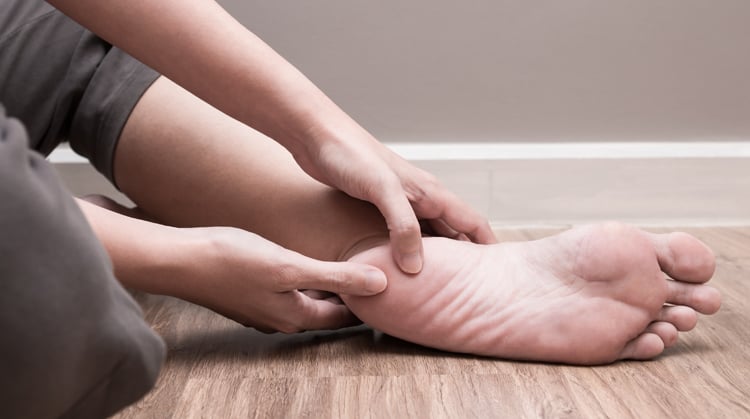
Plantar fasciitis is one of the most common causes of heel pain. Ten percent of Americans will experience plantar fasciitis at some point during their lifetime. Plantar fasciitis affects people of all ages, both athletes and nonathletes. Men and women have an equal chance of developing the condition.
The plantar fascia is a thick band of tissue connecting the heel to the ball of the foot that can become inflamed or tear for a variety of reasons.
Risk Factors
- Occupations involving prolonged standing
- Age (over 40 years)
- Obesity
- Faulty foot mechanics, such as a high arch or a flat foot, and limited ankle mobility
- Training errors, such as increasing mileage too quickly
- Poor calf flexibility
Common Symptoms
- Sharp pain in the bottom of the foot, near the heel
- Pain that worsens with the first few steps in the morning or after prolonged inactivity
- Pain after standing for prolonged periods of time
- Pain from walking barefoot or in shoes with poor support
Physical Therapist Treatment
Physical therapists evaluate and treat plantar fasciitis and will work with you to develop a program to decrease your symptoms, which may include:
- Manual therapy techniques, such as joint and soft tissue mobilization
- Stretching exercises to improve the flexibility of your lower leg muscles, ankle, and the plantar fascia
- Use of a night splint to maintain correct ankle and toe positions
- Selection of supportive footwear and/or shoe inserts that minimize foot pronation and reduce stress to the plantar fascia
- Application of ice to decrease pain and inflammation
- Iontophoresis (a gentle way to deliver medication through the skin)
- Taping of the foot to provide short-term relief
Research shows most cases of plantar fasciitis improve over time with these conservative treatments. Surgery is rarely required.
Read more about a how a physical therapist treats plantar fasciitis.
Physical therapists are movement experts. They improve quality of life through hands-on care, patient education, and prescribed movement. You can contact a physical therapist directly for an evaluation. To find a physical therapist in your area, visit Find a PT.


